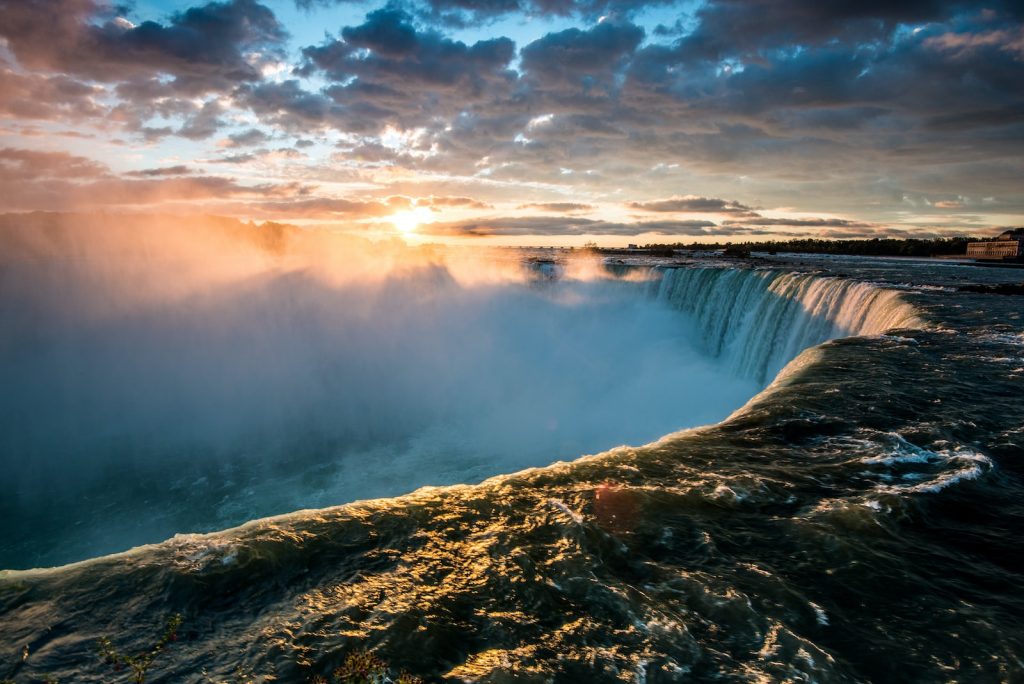Canada’s Iconic Landmarks
Canada is a country full of natural beauty, diverse cultures, and rich history. From Newfoundland’s rugged coastlines to the Rockies’ soaring peaks, Canada boasts a stunning array of landscapes that will leave you in awe. However, Canada’s beauty doesn’t stop there. The country is also home to a number of iconic landmarks and architectural marvels that tell the story of Canada’s past and present. In this blog, we’ll take a journey across Canada to explore some of the most recognizable and celebrated landmarks and structures that define this great nation. From the CN Tower in Toronto to the Parliament Buildings in Ottawa, we’ll delve into the stories and significance behind each of these incredible structures and discover the secrets and stories that make them so beloved. So, pack your bags and get ready to explore Canada’s iconic landmarks and architecture like never before!
History of Canadian Architecture
The history of Canadian architecture is rich and varied, reflecting the country’s unique cultural and geographic diversity. Canada’s architectural heritage reflects the many different cultural influences that have shaped the country, from the Indigenous peoples’ longhouses and tipis to the grand Gothic Revival buildings of the late 19th century.
In the early years of European settlement, Canadian architecture was largely influenced by the French and British colonial styles. The earliest examples of Canadian architecture are the fortified trading posts and military installations established by these colonial powers, such as the Fortifications of Quebec and Halifax’s Citadel Hill.
As Canada grew and developed, its architecture began to take on more distinct regional characteristics. The Prairies, for example, were characterized by the tall, wooden grain elevators that dotted the landscape. At the same time, the Maritimes were known for their colorful wooden houses with steeply pitched roofs and elaborate trim.
In the late 19th century, Canada experienced a building boom that saw the construction of many grand public buildings and private homes in the Gothic Revival style. Some of the most notable examples of this style include the Parliament Buildings in Ottawa, the Royal Ontario Museum in Toronto, and the Chateau Frontenac in Quebec City.
Modern Developments
In the 20th century, Canadian architecture moved towards modernist styles, focusing on function and simplicity. The International Style, characterized by buildings with clean lines and simple forms, became popular in Canada during this time. Examples of this style include the Toronto-Dominion Centre and the Habitat 67 housing complex in Montreal.
Today, Canadian architecture continues to evolve and reflect Canadian society’s changing needs and values. As seen in projects such as the Vancouver Convention Centre West and the Manitoba Hydro Place building in Winnipeg, sustainability and environmental consciousness are increasingly important considerations in modern Canadian architecture.
In conclusion, the history of Canadian architecture is a fascinating reflection of the country’s diverse cultural and geographic influences. From the early colonial buildings to the modern, sustainable designs of today, Canadian architecture has continually adapted and evolved to meet the needs of its inhabitants and reflect the country’s unique identity.
Notable Buildings and Structures
Canada has many notable buildings and structures, each with its own story and significance. From iconic landmarks to innovative modern designs, these structures represent the best of Canadian architecture and engineering. Here are just a few examples of some of Canada’s most notable buildings and structures:
CN Tower – Toronto, Ontario
The CN Tower is one of Canada’s most iconic landmarks, the tallest freestanding structure in the Western Hemisphere. The tower is 553.33 meters tall and offers stunning views of Toronto and the surrounding area.
Parliament Buildings – Ottawa, Ontario
The Parliament Buildings are the seat of Canada’s federal government and are home to the House of Commons and the Senate. Designed in the Gothic Revival style, the buildings are a symbol of Canadian democracy and national identity.
Habitat 67 – Montreal, Quebec

Habitat 67 is an innovative housing complex designed by architect Moshe Safdie for the 1967 World Expo. The complex is made up of 354 modular concrete units arranged in a way that creates private outdoor spaces and communal gardens.
Royal Ontario Museum – Toronto, Ontario
The Royal Ontario Museum is one of Canada’s largest and most important museums, home to an extensive collection of art, artifacts, and natural history exhibits. The building itself is an architectural masterpiece, with a striking modern addition designed by Daniel Libeskind.
Chateau Frontenac – Quebec City, Quebec
The Chateau Frontenac is a historic hotel located in the heart of Quebec City. The grand building was built in 1893 and has since become an iconic symbol of the city’s rich history and culture.
Canadian Museum for Human Rights – Winnipeg, Manitoba
The Canadian Museum for Human Rights is a striking and innovative museum that promotes human rights education and awareness. The building is a work of art, with a stunning glass tower representing hope and enlightenment. These are just a few examples of Canada’s many notable buildings and structures. Each one is a testament to Canada’s rich architectural heritage and its commitment to innovation and progress.
Interaction With Nature
Canada is home to many iconic landmarks that offer a unique opportunity to interact with nature. These landmarks showcase Canada’s rich cultural heritage and stunning natural landscapes. Here are some examples of Canada’s famous landmarks and their interaction with nature:
Niagara Falls – Niagara Falls, Ontario

Niagara Falls is one of Canada’s most famous landmarks, and for a good reason. The falls are a stunning sight to behold, with millions of gallons of water cascading down every minute. Visitors can take a boat ride on the Maid of the Mist, which takes them right up to the base of the falls or walk along the Niagara Gorge, which offers breathtaking views of the falls and the surrounding area.
Moraine Lake – Banff National Park, Alberta
Moraine Lake is one of Canada’s most iconic natural landmarks, known for its crystal-clear turquoise waters and surrounding mountains. Visitors can hike around the lake or rent a canoe to explore the serene waters and stunning scenery.
Capilano Suspension Bridge – Vancouver, British Columbia
The Capilano Suspension Bridge is a famous landmark that offers a unique perspective on nature. The bridge spans 140 meters across a deep canyon and offers stunning views of the forest canopy and rushing river below. Visitors can also explore the Treetop Adventure walk, which takes them on a guided tour through the forest canopy.
Stanley Park – Vancouver, British Columbia
Stanley Park is a landmark in its own right, offering a unique opportunity to interact with nature in the heart of Vancouver. The park is home to old-growth forests, serene lakes, and stunning views of the city skyline and surrounding mountains. Visitors can bike or walk along the seawall, explore the park’s many trails, or relax on one of the many beaches.
Hopewell Rocks – Bay of Fundy, New Brunswick
The Hopewell Rocks are a unique natural landmark showcasing nature’s power. The rocks have been shaped by the tides of the Bay of Fundy, which have created stunning formations and caves that can be explored during low tide. In conclusion, Canada’s landmarks offer a unique opportunity to interact with nature and experience the country’s stunning natural beauty. Whether the roaring waters of Niagara Falls or the serene waters of Moraine Lake, these landmarks showcase the best of Canada’s natural wonders and cultural heritage.
Conclusion: Impact of Landmarks
In conclusion, Canada’s landmarks have significantly impacted the country’s cultural heritage, tourism industry, and natural environment. These iconic structures and natural wonders not only showcase Canada’s rich history and diverse cultural heritage but also provide a unique opportunity for visitors to interact with nature and experience the country’s stunning landscapes. The landmarks also have a significant economic impact, attracting millions of visitors each year and generating billions of dollars in revenue for the tourism industry. Moreover, modern developments such as skyscrapers and green buildings showcase Canada’s commitment to innovation and sustainability, shaping the country’s urban landscape and contributing to its economic growth. Overall, Canada’s landmarks have played a crucial role in shaping the country’s identity and will continue to do so for generations to come.






























